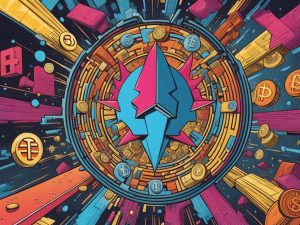**Title: Chinese Cross-Chain Protocol Multichain Faces Controversy and Loss of Funds**
**Introduction**
The $1.5-billion Chinese cross-chain protocol Multichain has been hit by a series of controversies, including the arrest of its CEO and core team by Chinese authorities. The protocol’s funds have been seized, leaving $1.5 billion in total value locked inaccessible. Victims are demanding answers and have formed a victims group to seek further information. The protocol’s multi-party computation servers and private keys were under the exclusive control of the arrested CEO, leading to the shutdown of the protocol. Attempts to rescue users’ assets have resulted in further arrests and mysterious swaps of funds. The Fantom Foundation has hired attorneys in China to assist in the recovery process and frozen funds are being distributed to victims.
**Key Points**
– Multichain’s CEO and core team were arrested by Chinese authorities, leading to the shutdown of the protocol and the seizure of funds.
– $1.5 billion in total value locked on Multichain remains inaccessible.
– Victims have formed a group to seek answers and have contacted Chinese embassies and police in their home countries with no response.
– The Fantom Foundation has hired attorneys in China to assist in the recovery process and frozen funds are being distributed to victims.
– Stablecoin issuers Circle and Tether have frozen over $65 million in assets associated with the Multichain hack.
**Hot Take**
The arrest of Multichain’s CEO and core team has led to the loss of $1.5 billion in locked funds, leaving victims in a state of uncertainty. The lack of information from Chinese authorities and the mysterious swaps of funds have further deepened the controversy surrounding the protocol. The involvement of the Fantom Foundation and the freezing of assets by stablecoin issuers show attempts to recover funds and provide relief to victims. However, the long-term consequences for the crypto industry in China remain uncertain, as investors and developers face increasing risks and uncertainties.





 By
By

 By
By
 By
By
 By
By
 By
By